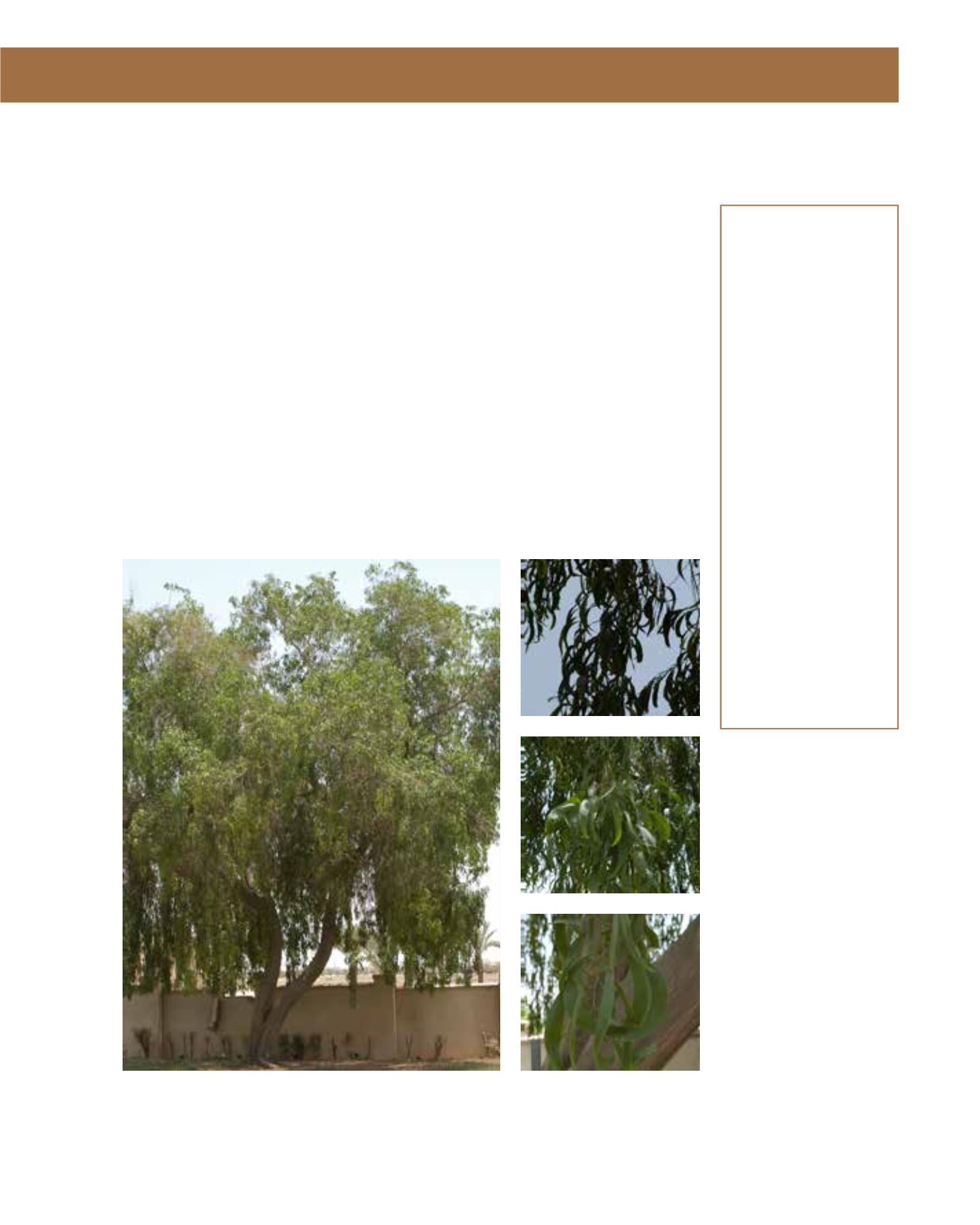

GENERAL
Origin
:
sub-tropical,
tropical
Vigour
:
fairly fast
growing
Humidity
:
very arid, semi-
arid
Propagation :
sowing and
pricking out
Maintenance :
low
CONDITIONS
Urban climate :
resistant
Dessication :
vulnerable
Stagnant water :
vulnerable
Irrigation
:
low
Salinity/ppm :
moderate (1500
ppm)
Hardiness
:
-9°C
SHAPE
Type
:
tree, shrub
Height
:
6 m-10 m
Spread
:
6 m-8 m
Foliage
:
evergreen
FLOWER
Colour
:
bright yellow
Period
:
March - April
Smell
:
scented, flower
FRUIT
Type of fruit :
pod
Fruit size
:
13 cm
An erect or spreading, medium-sized shrub or small tree, usually multi-stemmed from or near
ground level, this Australian native acacia is also the country’s floral emblem. This is a very showy
wattle and has been chosen as suitable for conditions in the Arriyadh region. It has a smooth
or finely fissured, dark brown to greyish bark with angled branchlets and bright-green, sickle-
shaped phyllodes. Large, sweetly-scented, golden ball-shaped flowers occur in spring in very
dense clusters, providing a vivid contrast to the foliage. Seed pods are straight or curved. Usually
growing in the understorey of dry woodland and heath, on sandy and stony soil in open scrub
formations, A. pycnantha is tolerant of slightly to moderately saline soil and is also moderately
frost-tolerant. It is fast-growing, but tends to be short-lived in cultivation: plants require a well-
drained, sunny position with ample watering. The shallow and spreading roots are nitrogen-
fixing. Propagation is from scarified seed, pre-soaked in hot water to soften the hard coating.
Widely planted as an ornamental, on account of its profusion of flowers, it is a popular garden or
feature plant that attracts wildlife. In Australia, trees regenerate freely after fires, which, although
killing the plants, help the germination of seed stored in the soil, if rain occurs soon after. Such
regeneration may produce dense thickets. Few maintenance measures are necessary A. pycnantha
is best pruned to allow multi-stems to develop, since otherwise it may become lanky.
30
Acacia pycnantha,
Mimosaceae
Golden Acacia,
Golden Wattle
















